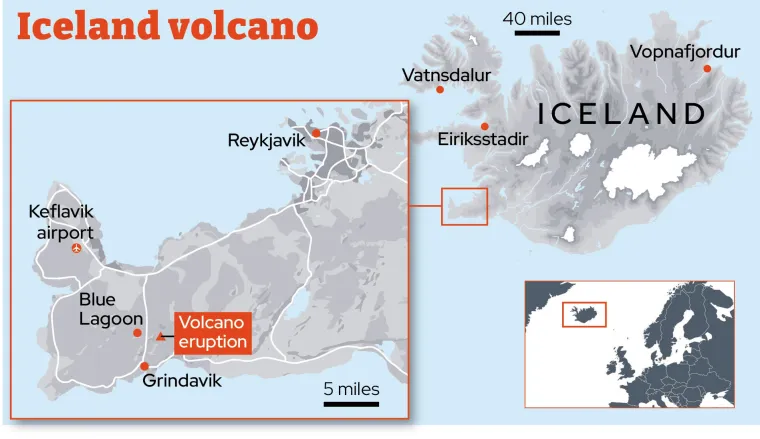Why in the News?
Recently a volcano erupted in south-west Iceland, continuing a pattern of recurring geological activity on the Reykjanes Peninsula.

About the Reykjanes Peninsula:
- Location: Situated in southwest Iceland along the Mid-Atlantic Ridge where tectonic plates diverge.
- Volcanic Reawakening: Dormant for centuries until 2021; now sees recurring eruptions.
- Eruption Type: Known for fissure eruptions—lava flows from cracks, not a central crater.
- Key Sites: Includes Grindavik (evacuated), Blue Lagoon spa, and Svartsengi power plant.
- Volcanic Importance: Part of Iceland’s 30+ active volcanic zones.
Key Features:
- Eruption Style: Produces steady lava flows with minimal ash output.
- Flight Safety: Air traffic remains unaffected due to lack of stratospheric ash.
- Evacuation Impact: Grindavik largely abandoned after 2023 lava threat.
- Long-Term Activity: Eruptions may persist for decades or longer.
- Iceland Snapshot: Population ~400,000; similar in size to Kentucky.
- Tourism Appeal: Attracts visitors like other volcanic hotspots—Mexico, Indonesia, Sicily, and New Zealand.
| [UPSC 2014] Consider the following geological phenomena:
1. Development of a fault 2. Movement along a fault 3. Impact produced by a volcanic eruption 4. Folding of rocks Which of the above cause earthquakes? Options: (a) 1, 2 and 3 (b) 2 and 4 (c) 1, 3 and 4 (d) 1, 2, 3 and 4* |
Get an IAS/IPS ranker as your 1: 1 personal mentor for UPSC 2024

